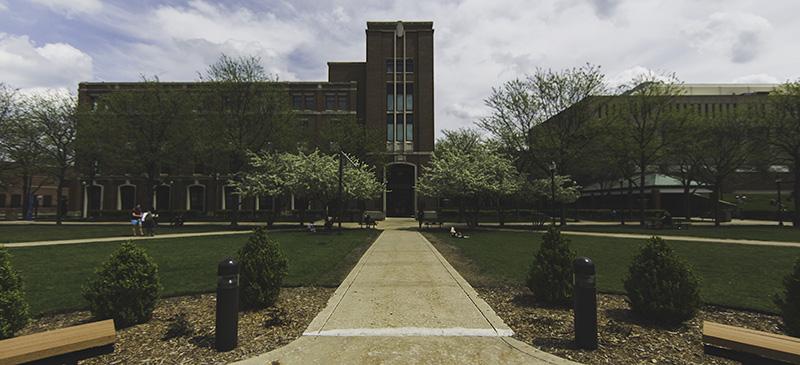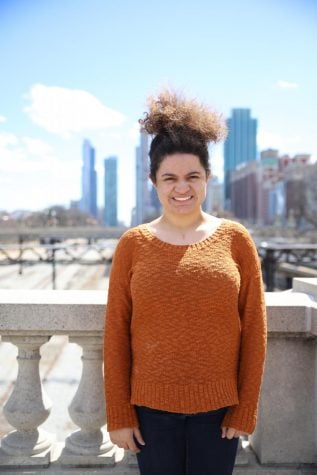DePaul’s Faculty Council discussed its updated diversity report as well as possible changes to textbooks and tuition at its April 3 meeting.
After a request for an updated faculty diversity report, Associate Provost for Academic and Faculty Affairs Lawrence Hamer was able to present the report with data from 2018. The report also addressed a reflection of demographics from the School of New Learning.
The 2018 data cited 909 full-time faculty members, down from 917. Faculty demographics from 2018 included 573 white faculty members and 62 African American faculty. Ninety-four faculty are from an unknown racial demographic.
Demographic discrepancies that the Faculty Council is concerned about were African Americans, of whom there are just 62 full-time faculty for 2,072 students and the 573 white full-time faculty for 11,260 white students. The Faculty Council wants to close the gaps so that students are represented by a proportional number of faculty.
The report also notes that 4.3 percent of male faculty and 3.0 percent of female faculty are non-resident aliens, and 3.1 percent of male students and 3.0 percent of male students are non-resident aliens, as well. The university defines “non-resident aliens” as international faculty and students attending school with an educational visa or teaching with a work visa.
Hamer said not much has changed with the inclusion of the 2018 data.
“On average, our students are more diverse than students at most universities,” Hamer said. “Student diversity is increasing at a much higher rate than faculty diversity is, which is not surprising. Faculty doesn’t turn over nearly as much as students. One of our challenges is how we increase the diversity of our faculty at a higher rate than we currently are.”
Hamer said that while the university is doing well for diversity in some demographics, that doesn’t mean that it is doing well in all areas.
Hamer measured the difference between the 909 full-time faculty and the 22,437 students. According to the report, African American female faculty make up 3.7 percent of the faculty, while 5.6 percent of female students are African-American.
He also noted that white male faculty made up 33.9 percent of the faculty demographic, while white male students make up 24 percent of the student demographic.
On average, there is about a 2.5 percent difference between faculty in a certain gender and racial category and students in those gender and racial categories, according to Hamer and the report.
Quinetta Shelby, an associate professor of inorganic chemistry, said the problem with using absolute values is that there is some unclear information the report is incorrectly representing.
“If I am a student, and I come to DePaul and I see that a percentage of African American women students is higher than that for African American women faculty, as opposed to white male students and white male faculty, the negative is important,” Shelby said.
Shelby said it was a matter of questioning the methods of measuring the ratios for faculty-to-student diversity.
Shelby also noted that in Section 2.3 of the Strategic Plan, one of the goals is to increase diversity of full-time and part-time faculty in every college.
“I would guess that in this diversity presentation, indirectly that would be something that you would be addressing,” she said.
Valerie Johnson, a political science professor, said only looking at how the university is doing on an overall average treats groups in the same way without addressing trends occurring between groups.
“One tells you one thing, another tells you another thing,” Johnson said.
Hamer said part of his frustration with the issue is that individual trends and overall averages should both be used without one substituting the other. He said both views are not trying to do the same thing.
Shelby questioned whether the average makes the college appear as if it is doing well in its diversity efforts.
“Hidden in that average is that [with] the white male faculty and students, the gap is 9.9,” she said.
Later in the meeting, John Berdell offered a proposal of a system in which individual faculty members have an option to have course material built into tuition.
Certain math classes, stats classes, economics, finance and accounting have students required to do online work, said Berdell, an economics professor.
“It has a lot of early work in the course to probe for deficiencies and problems that the student may need to address, perhaps with the instructor, perhaps with tutors,” Berdell said. He said students who might be at risk for failure might find the online work to be helpful.
Berdell also said financially fragile students who don’t have the extra money to purchase the material are frequently the students who find the material most helpful.
“I find the financially fragile students are the ones who wind up at the bottom of the heap here,” Berdell said.
Each instructor would have the liberty to pick a product to require students to buy to accompany their tuition, Berdell said. Students could use their financial aid.
CORRECTION: A previous version of this story said in the fifth paragraph that a small percentage of students and a small percentage of faculty are undocumented. This is not true. That same percentage of students and faculty are “non-resident aliens,” and are in the country legally with work or educational visas.



